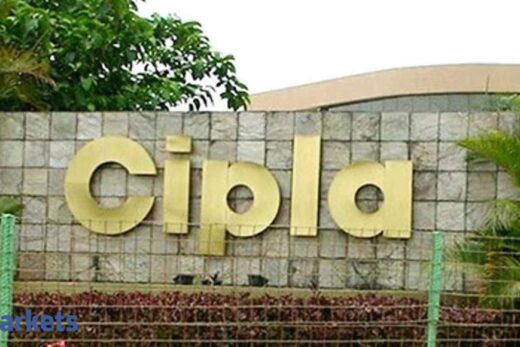Falling interest rates and changes in tax rules have altered the fixed income landscape in the past 2-3 years. The five-year fixed deposit rate of SBI has dropped from 6.85% in late 2018 to 5.40% now. But interest from fixed deposits is fully taxable, and the post-tax return in the 30% tax bracket is a niggardly 3.7% that lags consumer inflation in urban areas by more than 130 basis points.
Other debt options have also given muted returns. Except for credit risk funds, all categories of debt funds have delivered 4-6% returns in the past one year. “Fixed income investors need to revise their returns expectations. They should not expect the returns that debt investments gave 2-3 years ago,” says Raghvendra Nath, Managing Director of Ladderup Wealth Management.
How tax impacts returns

This week’s cover story looks at the various fixed income options investors and examines their utility for investors. “The investment choice will depend entirely on how soon you need the money,” says financial planner Pankaaj Maalde. We have made four broad categories of financial goals based on the investment horizon.
Very short term: 3-6 mths
If you hold a large amount of cash (sale proceeds of property or a matured investment) and need to redeploy it in 3-6 months, keep the money in a fixed deposit or a liquid fund. The returns will not be very high, but that should not be a concern. When the investment horizon is so short, the focus should be on capital protection and liquidity and not on returns. Even if the return is higher by 1-2 percentage points, it will not make a big impact in 3-6 months.
In fact, if your bank offers a higher rate on the savings account balance, you can even consider keeping the money in your bank account. Some banks, including Kotak Mahindra Bank, IndusInd Bank, Bandhan Bank, Lakshmi Vilas Bank and RBL Bank offer up to 6-6.5% interest on the savings bank account balance if the amount exceeds a certain threshold. Under Sec 80TTA, up to Rs 10,000 interest on the savings bank balance is tax free. This will bring down the overall tax on the interest earned by your bank balance.
The other option could be liquid funds and ultra short duration debt funds. Government bond yields have risen in recent months, and could go up further if inflation rises. But these funds will not be affected because they hold very short term instruments.
For those focused too much on minimising tax, arbitrage funds can be a good option. The category has given 4.18% returns in the past one year, which is comparable with the returns generated by debt fund categories. But these arbitrage funds are treated as equity funds for tax purposes, which means the short-term gains will be taxed at 15%.
When do you need the money?
The time horizon will define which instrument is suitable for you.

Short term: 1-2 years
The investment options will not change too much if your investment horizon is slightly longer at 1-2 years. You can also consider corporate fixed deposits, where interest rates are slightly higher than what banks offer. But keep in mind that corporate deposits are not as safe as bank deposits. You need to be careful even when investing in bank deposits. “Limit the exposure to Rs 5 lakh per bank so that your investments are covered under the deposit insurance scheme,” advises Mrin Agarwal, Founder Director of Finsafe India.
It would also be a good idea to invest in short-term debt funds. The benchmark 10-year government bond yield, which hovered around 6% for most of this year, has already moved up to 6.34% and is expected to rise further. “Don’t venture into medium term and long-term bond funds at this juncture,” says Maalde. However, funds holding short-term bonds will not be impacted.

Arbitrage funds can prove very useful if the holding period is one year or more. Since these schemes are treated as equity funds by the taxman, gains of up to Rs 1 lakh will be tax free.
Medium term: 3-5 years
Your options widen if you can remain invested for more than three years. For one, if the holding period is three years or more, gains from debt funds are treated as long-term capital gains. They are not taxed at the slab rate but at 20% after indexation. Indexation takes into account the consumer inflation during the holding period and accordingly raises the purchase price of the asset to adjust for inflation. So if you bought an asset for Rs 10,000 three years ago and the cost inflation index has risen 10% since then, the asset will be deemed to have been purchased for Rs 11,000. “High inflation is here to stay for sometime, which means indexation can bring down the effective tax significantly,” says Sandeep Bhalla, a Mumbai-based financial consultant and former banker.

If you are willing to wait for five years, you can also consider Post Office schemes such as National Savings Certificates, Kisan Vikas Patras and the Monthly Income Scheme. These small savings schemes offer higher interest than bank deposits while the sovereign guarantee makes them completely safe. The problem is they are not very flexible. NSCs cannot be foreclosed, though Kisan Vikas Patras can be sold after 30 months. Senior citizens (above 60 years) can consider the Senior Citizens’ Saving Scheme, which offers 7.4% returns and pays the interest every quarter.
Long term: Over 6-7 years
Till last year, the Employees’ Provident Fund was the best long-term investment in debt. Employees covered by the scheme could put away a big chunk of their pay to earn 8.5% tax free returns. But this year’s budget has changed the rules and taken some of the sheen off the Provident Fund. Now, the interest earned on an employee’s contribution above Rs 2.5 lakh will be taxed. Even so, experts say that the PF remains the best long-term option and one should definitely exhaust the Rs 2.5 lakh limit for tax free contributions to the scheme.

The PPF is another tax-free option worth considering. At 7.1%, it is far better than other small savings schemes and bank deposits. But it has an annual investment limit of Rs 1.5 lakh. If you have already exhausted that limit, you can consider the RBI Floating Rate Savings Bonds which are offering 7.15% right now. These bonds have a maturity of seven years and the interest rate is 35 basis points above the rate offered on the National Savings Certificates.
If you want to save for your daughter, go for the Sukanya scheme which offers 7.6% tax free interest. But it is open only to girls below 10.



